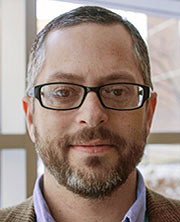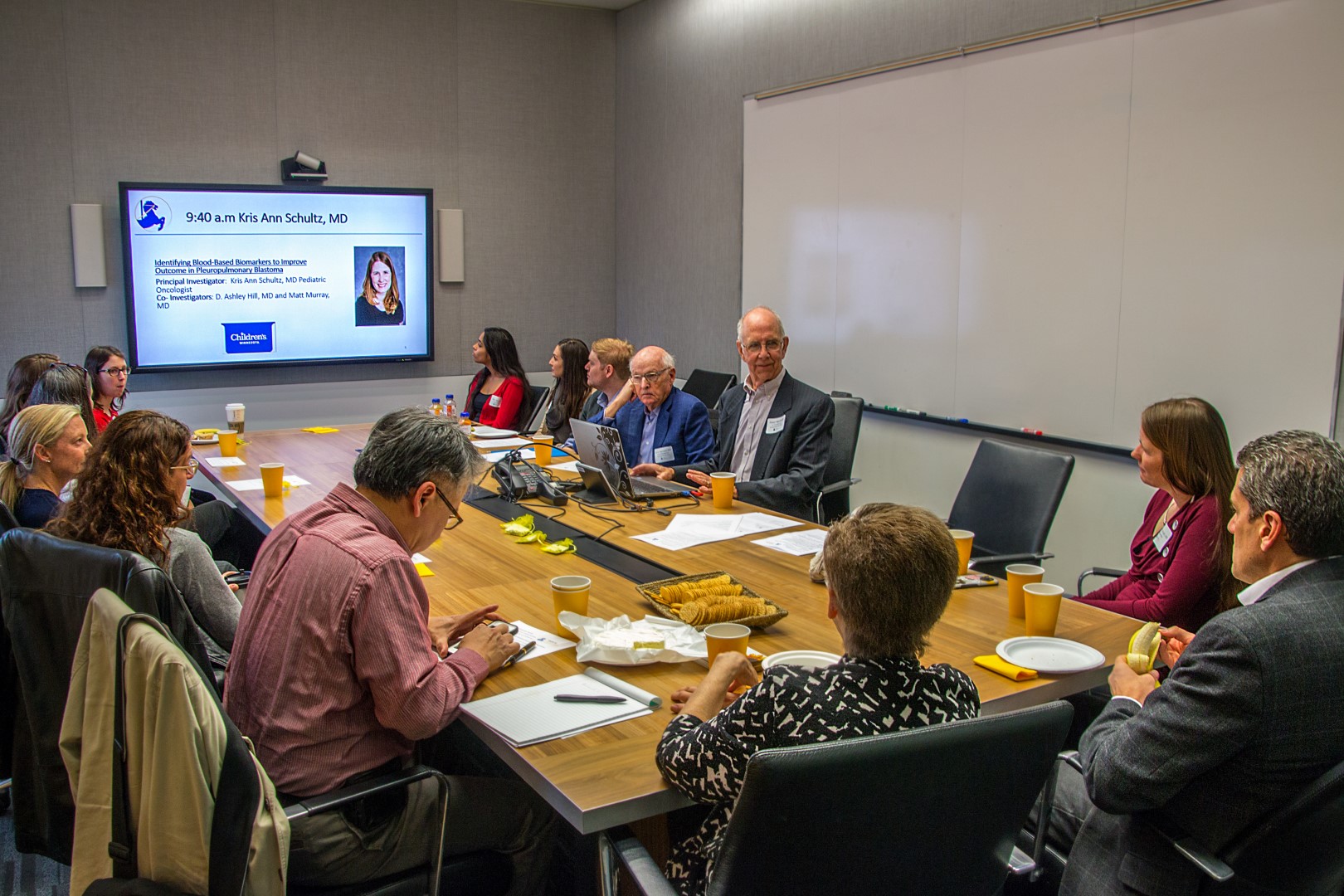
Logan Spector is not a medical doctor, but he does have the opportunity to talk with families as part of his research work. In his experience, the first question asked by parents whose children have been diagnosed with cancer is: What’s going to happen to my child? The second question is: Why did this happen to my child? Epidemiologists like Dr. Spector are “here to investigate the why.”
Back in 2004, a small seed grant from Rein in Sarcoma helped Dr. Spector support a successful application for funding from the National Institutes of Health. NIH funding allows him to study the connection between osteosarcoma and certain genes. The entire field of genetic epidemiology has been revolutionized, with the possibilities changing dramatically in just the last decade. In other work, Dr. Spector uses new technology that could increase the chances of finding key connections between troublesome genes and aggressive cancers. The University of Minnesota, where Dr. Spector is an Associate Professor, is “a great place to study pediatric cancer.” It’s not quite the life led by Colonel Sam Daniels, but it suits him well.
A Beginning
At The College of William and Mary, Logan Spector studied biology. For his life, Dr. Spector sought a field where he could use this science without being tied to a lab. Epidemiology offers these possibilities. For a time, Dr. Spector was intrigued by Colonel Sam Daniels, the character played by Dustin Hoffman in the 1995 movie “Outbreak.” But then he discovered that Hoffman played a virologist, not an epidemiologist. What’s the difference? Virologists chase down viruses, sometimes deadly and always contagious. Not the best fit for a man who wanted to have a family one day. And not the study of people, which is what Dr. Spector found really interesting.
Epidemiology is the study of people. Groups of people, put into categories and then compared. Researchers look for the factors that make a difference. Is one group more likely to suffer disease than another? If scientists can find out why, then we may be able to prevent the harm. Even when this is not possible, it can be helpful to know our chances. And in cancer research, naming the targets can lead to break-throughs in treatment.
When I think about break-throughs in treatment, I tend to think of fancy new drugs. But here is a more stealth example, at least for those of us who don’t do this for a living: Scientists have discovered that children who have one particular version of a certain gene will face a great risk of getting sick from one of the main treatments used for acute lymphocytic leukemia. Because they know this, doctors now can test their patients to look for this gene. If the children have the version that places them at risk, doctors can lower the dose of the drug, and lower the chance the kids will get sick. Steps like these can lead to real differences in many lives.
Making this difference seems to call Dr. Spector, who received his PhD in Epidemiology from Emory University in 2002. He began with an intention to work with infectious disease. His dissertation led him to childhood leukemia, however, and he has worked with pediatric cancers ever since.
Calling for Investigation
Like many of his colleagues, Dr. Spector is drawn to challenging and important questions. After he arrived at the University of Minnesota, one of his first assignments was to write a book chapter on childhood cancer. So he dove into the literature. There he discovered osteosarcoma and Ewing’s sarcoma, two cancers that were “ripe for study.”
In osteosarcoma, there was “this very strong clue” that the cancer “mirrors puberty almost exactly.” Girls peak earlier than boys, both in their age for getting the cancer and in their age for puberty. Boys peak later, and their peak is higher than girls. Their pubertal growth spurt is longer and more intense – they get taller and bigger, on average, than girls – and they also have higher chances of getting osteosarcoma.
Ewing’s sarcoma arises almost exclusively in children of European descent. It also is strongly associated with hernia. This means that children who have certain kinds of hernias are more likely to get the cancer than would be expected just by chance. And don’t think, here, about those hernias your friends may get from lifting too much weight. The hernias that are linked with Ewing’s sarcoma are inherent weaknesses in tissue structure, affecting for example the umbilical cord, the diaphragm or the intestines. People are born with these weaknesses. This suggests a possibility that Ewing’s sarcoma could be caused by things that happen before children are born.
Basically, there was this “grab bag of things that did not fit well together,” which, to Dr. Spector, was “collectively calling for investigation.” And so he has investigated, with fine mentoring from Dr. Julie Ross, who brought him to the University through a research training grant and who continues to serve as his mentor today.
Revolutionary Advances
If you think of the human genome as a book, the Human Genome Project found the first letter of every sentence, and the period at the end of each sentence. Next, scientists began to fill in every seventh letter of each sentence. Now, scientists are in the process of discovering every letter in every sentence. Dramatic changes have occurred in this field, even since Dr. Spector began his work in 2002.
Several years ago, when scientists wanted to look for certain genetic changes that might be important for cancer, they needed to decide up front. Using the clues they could find, researchers would name the genes they were going to study. The problem with this method is that we people have about 30,000 genes. The ways they combine together, and the things that can go wrong, are almost too many to count. So the chances of hitting on just the right connection, between bad genes and bad cancers, were not great. The studies based on these predictions ended up having a fairly poor track record, as scientists learned that “we don’t know as much as we think about what might be relevant.”
Enter the Genome Wide Association Study, which now allows scientists to “put a genome on a chip and get back a million base pairs.” I’m not really very sure what this means. But I do understand that what it promises is a much better ability to compare information across people and cancers, and to figure out what really matters. Dr. Spector’s current work includes this kind of research for both osteosarcoma and Ewing’s sarcoma.
“Those of us who’ve been paying attention,” notes Dr. Spector, have heard a lot of hype for the last 10 years about the benefits of personalized medicine. The benefits “have not materialized as fast as we’d like. But it will happen.” Particularly for childhood cancers, the benefits will come.
We await this future. And are glad that bright young minds continue to engage the clues.
By Christin Garcia

